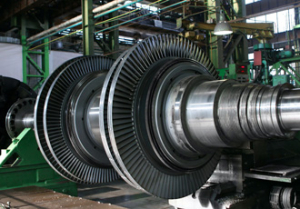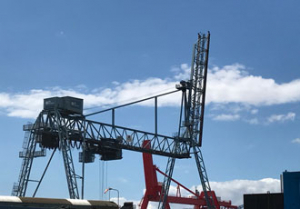Industrial robot turns into precise machining system
13th July 2010

Accurate machining is usually carried out with machine tools or machining centers. This means high costs and workpiece sizes limited by geometrical factors. It would be significantly cheaper and more flexible if industrial robots could be used instead, but their inaccuracy has so far made this impossible. This inaccuracy arises from the long serial kinematics chain with only low stiffness. A different approach is now possible. It has not been necessary to develop new robots because standard versions have been combined with an external actuator system to increase the absolute accuracy.
The Fraunhofer IPA has developed a separate compensating actuator system for the milling head so that an industrial robot can achieve the accuracy necessary for machining. The inaccuracies which occur with robotic milling units are measured online while the machining is in progress and are corrected directly where they occur in real time by the compensating actuator system. The advantages of the method are obvious: The workpiece is not firmly clamped to a table, as is the case when machining with CNC machines. With this system, the workpiece is gripped by the robot, which guides it as it is machined by the milling head. This means only one machine is required for handling and machining, investment costs decrease, flexibility increases and, in addition, this type of robotic solution can be incorporated well into fully automated production lines.
Piezo actuators and flexures
The compensation kinematics, including the actuator technology and mechanical set-up, were developed at the Fraunhofer IPA in Stuttgart and are based on piezo actuators from Physik Instrumente (PI) of Karlsruhe. There were several reasons for this particular choice. The piezo actuators operate without wear and tear, are friction-free and have no slip. Moreover, they can be accelerated with up to 10 g and are suitable for the high frequencies which are required to compensate the inaccuracies in the robot’s trajectory.
Since piezo actuators only operate with small displacements on principle, the IPA combined them with flexures. This made it possible to realize paths up to 690 µm in the application described. The trajectory accuracy of the kinematics in all three axes is in the nanometer range. The flexures which transfer the power and the motion also operate without wear and tear and require little maintenance. They are also lighter, quieter, stiffer, more dynamic and more accurate than conventional compensation mechanisms. Piezo actuators have thus proven once more that they are the driving force behind technical advances. The closed-loop robotic solution opens up new possibilities for the milling of metals and plastics.
Piezo actuators and flexures
The compensation kinematics, including the actuator technology and mechanical set-up, were developed at the Fraunhofer IPA in Stuttgart and are based on piezo actuators from Physik Instrumente (PI) of Karlsruhe. There were several reasons for this particular choice. The piezo actuators operate without wear and tear, are friction-free and have no slip. Moreover, they can be accelerated with up to 10 g and are suitable for the high frequencies which are required to compensate the inaccuracies in the robot’s trajectory.
Since piezo actuators only operate with small displacements on principle, the IPA combined them with flexures. This made it possible to realize paths up to 690 µm in the application described. The trajectory accuracy of the kinematics in all three axes is in the nanometer range. The flexures which transfer the power and the motion also operate without wear and tear and require little maintenance. They are also lighter, quieter, stiffer, more dynamic and more accurate than conventional compensation mechanisms. Piezo actuators have thus proven once more that they are the driving force behind technical advances. The closed-loop robotic solution opens up new possibilities for the milling of metals and plastics.
Similar articles
More from Physik Instrumente (PI) GmbH & Co. KG
- Individual service for high-end positioning systems 6th February 2018
- Catalogue for alignment of optics and SiP 30th January 2018
- Compact linear stage driven by three-phase linear motor 5th January 2018
- Don't let the shakes ruin your selfie 13th November 2017

-(1)ed.jpg)










Write a comment
No comments